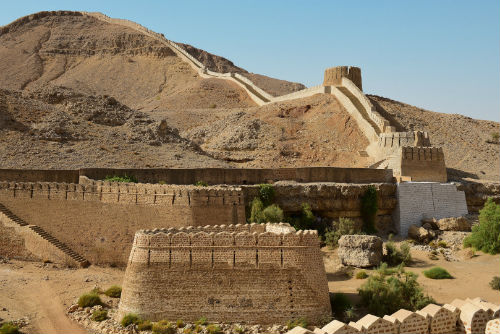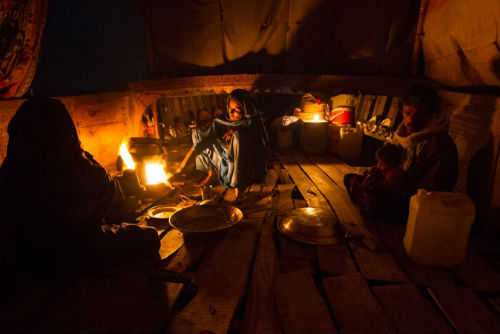
Birds and travelers have no permanent homes, they live temporarily and consider those places their homes. I consider myself a traveler who is in transit all the time. Even though our whole life is based on travel, we travel from childhood to adulthood, from young to old, and so on. I have lived in South Korea for the last two years for the purpose of higher education. During this period, I enjoyed my study and traveled a lot within South Korea. I love nature and magnificent mountains like Hallasan, Jirisan, and Mudeungsan. I have visited those places many times with my friends Khaqan, Fatima, and Lintang. I fall in love with the countryside landscape where the land is covered with greenery and colorful seasonal plants. The Korean people especially ‘ajummas’ and ‘ahjussis’ (elderly people) are very generous to me and they are always willing to talk about interesting topics.
The Land of Sufis on the West Indus River
However, everyone has their hometown where they have close ties with family and childhood buddies, where they have spent most of their time. Each one of us has a deep feeling inside regarding our hometowns. I was born in Sehwan, a small town in Sindh, Pakistan. Sindh is considered as the land of Sufis, there are lots of Sufis shrines like Hazrat Lal Shahbaz Qalandar, Hazrat Sachal Sarmast, and a Grand Mausoleum of Shah Abdul Latif Bhitai.
My town is situated on the west bank of the Indus River and it has a great history of Indus valley civilization. The town is known for various tourist attraction points but mostly it is famous because of Hazrat Lal Shahbaz Qalandar (1177–1274), he was a Sufi saint and poet who preached tolerance and spreading love and kindness among people of different religious backgrounds and he helped flourish religious harmony among the people. He was known as Lal Shahbaz Qalandar Lal ("red like a ruby") due to his red costume and "Shahbaz" for a divine spirit and "Qalandar" as he was a wanderer. The divine song "Dama Dam Mast Qalandar" praises Lal Shahbaz Qalandar's beliefs, and the song is very famous in Pakistan, India, Afghanistan, and Bangladesh. It was originally composed in the 13th century, since then this song has been sung by many singers of different countries and is extensively popular in the sub-continent. This place has a magnetic pool, a spirituality and a significance of its own as one can feel the peace while seeing the tomb of the saint. There are millions of devotees including Muslims, Hindus, and other believers who visit every day in their millions and find peace while listening to songs and dancing on the mystical songs.

Manchar Lake and Ranikot
There is another attractive place which is Manchar Lake. The lake lies around 10 kilometers west of Sehwan Sharif on the Indus Highway. It is claimed to be one of the largest lakes in Asia, the biggest freshwater lake in Pakistan, and the only lake that is home to fishermen living on wooden boathouses for hundreds of years. The home of the Mohana tribe, a community of fishermen who have always lived on the water, a whole family lives 24/7 on the boat, they sleep, eat, and cook on the boat. These fishermen families own their boats so you can take a boat ride with them and the lake has different kinds of fish and one can have the experience of fishing in the lake.
Around 80 Kilometers from Sehwan, there is another tourist spot and historical site called Ranikot. It is often called the Great Wall of Sindh. You can take the Indus highway to the Ranikot, the road is nice to go to the world’s largest fort. The historical fort with a circumference of approximately 26km is known as the largest fort in the world. The origin of the name of Ranikot is after the stream, “Rani Nai”, which means rain stream that runs through it, so it would make the “fort of the rain stream”. The fascinating thing about Ranikot is that nobody knows the history and the origin of the Ranikot but with the help of some great anthropologists, people have been trying to gather researched material about it. There are two more fortresses within the walls of Ranikot. One known as Shergarh and the other one is named Mirikot. Mirikot was built as the home of “Mir” or ruler. There is even a helipad marked on the gravel outside Mirikot while Shergarh that means “the Home of Lions” is located on a steep hill overlooking the entire fort at 1480 feet above sea level. It has a long wall of 32km.
The wall is divided into two parts; one is natural while the other one is made by the people. The handmade wall is about 30ft high and the natural one is 2000ft high. The Great Wall of Sindh has an incredible similarity to The Great Wall of China. It has been said that many tribes and kings have taken part in its development. It is believed that the fort was built during the regimes of the Sassanians, the Scythians, the Parthians, or the Bactrian Greeks. The last people who utilized the fort were Talpurs (Kings of Sindh) who lost their power in 1843 to Great Britain. This great wall has been ignored for ages but the amazing mystery surrounding its origins and the sheer scale of the structure put Rani Kot on the UNESCO World Heritage Site list in 1993.

A Country like Heaven by Nature
There are lots of other wonderful places in Pakistan which are highly recommended, the capital city is the second most beautiful capital in the world and K2 Mountain is the 2nd highest mountain peak in the world after Mount Everest. The beaches and islands of Karachi are blissful. The northern side of Pakistan is like heaven because of the nature there. There is an ancient Buddhist site in Taxila near the capital city which is thousands of years old. There are many ancient cities of the Indus Valley civilization and signs of urban planning like Mohenjo-Daro and Harappa are incredible to visit.
Life is traveling, one has to travel to understand life. Traveling provides us an understanding of society’s culture and history. Travel teaches us the way of life; how we can survive and thrive in the world. Keep traveling, keep learning about new cultures, meet different people, and make more friends globally.
By Shah Nawaz Shan, Master’s Student, Global NGO Program, Graduate School

